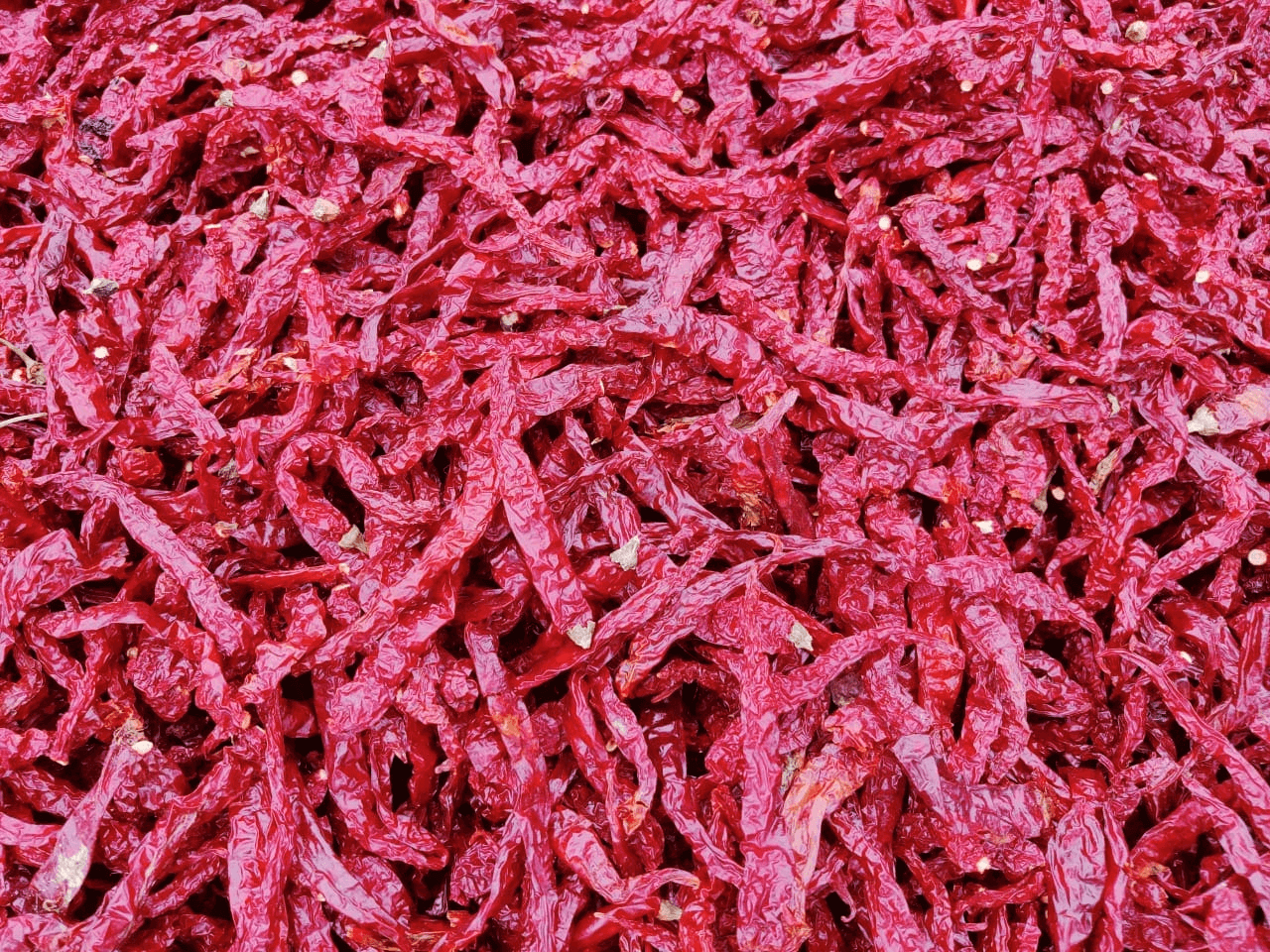Byadagi (also spelled “Byadgi” or “Byadagi”) red chilli cultivated largely in regions of Karnataka, India has won a reliable position in worldwide spice markets. Food manufacturers to spice blenders and natural-colour producers all come back repeatedly to Byadagi suppliers because the chilli provides an uncommon set of visual characteristics, functional performance, supply-chain consistency and competitive economics. Hereafter I detail the reasons why purchasers opt for Byadagi suppliers, the manner in which Indian suppliers address international quality requirements, and what importers must be aware of when sourcing.
Unique natural colour and appearance
One of the most appealing characteristics of Byadagi chilli is its rich, glossy red colour. In contrast to certain high-heat types that focus on capsaicin as opposed to colour, Byadagi types are valued for their red colour the factor making them particularly sought after to produce intense red chilli powder, natural colorants for foods and oleoresins that go into processed foods, snacks, and condiments. For producers seeking a deep red colour without introducing synthetic dyes, Byadagi powder is a sure raw material.
Mild-to-medium heat profile that’s commercially versatile
Byadagi chillies are typically milder than most Indian hot varieties. That moderate pungency is beneficial as it lets food formulators deliver colour and aroma without overwhelming heat perfect for use in sauces, seasonings, and blended spice combinations sold in markets where consumers want balanced heat. The consistent heat profile simplifies formulation and minimizes the requirement of expensive blending with milder peppers to moderate pungency.
Superior processing characteristics
From the viewpoint of a spice processor, Byadagi pods possess the following favourable physical characteristics:
High flesh content and intact pod integrity facilitate easy drying, storage and grinding with uniform particle size.
Low seed-to-pulp ratios in several lots minimize bitterness and enable the manufacture of smooth, visually clean powders.
Good pigment retention in drying and processing enhances oleoresin and powder manufacturers’ yields.
These features are translated into improved production efficiency and less wastage a tangible monetary benefit to consumers.
Strong domestic processing & infrastructure ecosystem
India boasts a sophisticated spices industry with a well-established ecosystem: contract farming models, drying and primary-processing facilities, modern grinding and extraction plants, and accredited third-party testing facilities. Suppliers within this system can supply processed products (powders, crushed flakes, oleoresins) to international packaging and shelf-life specifications. For importers, the presence of competent local processors simplifies things — instead of buying raw pods and stressing about processing, many buyers have access to finished ingredients ready to be used.
Certifications and traceability ability
Responsible Indian Byadagi suppliers are used to supplying regulated export markets and thus have documented systems: quality-management procedures, batch traceability, and often hold certifications demanded by buyers (e.g., export registration, food-safety certificates, organic or halal certification where relevant). This makes it easy for importers to satisfy their own regulatory regimes and private-label requirements. (When assessing suppliers, request to see particular certifications and latest lab-test reports linked to shipment batch numbers.)
Scalability and competitive price
The Byadagi production area is suited to both small holder and larger-scale production; together with Indian processing capacity, there is relative availability and capacity to ramp up according to season. Prices tend to be competitive with specialty peppers from smaller production nations. For most international buyers particularly those weighing cost against performance Byadagi is a sensible compromise: great colour and adequate heat at a competitive delivered price.
Robust exporter expertise & customer service
India’s spice exporters are internationally seasoned. That is to the advantage of importers:
International shipping logistics and document knowledge (FSSAI/health certification, phytosanitary conditions, e-invoicing).
Freight-forwarding and customs established relationships.
Capacity to organize value-added services (private branding, custom packaging sizes, modified atmosphere packaging for enhanced shelf life).
Seasoned suppliers minimize friction, reduce admin overhead, and make repeat sourcing more consistent.
Flexibility to buyer requirements blends, grades, and value-adds
Byadagi suppliers tend to supply various product grades (whole pods, stems removed, powdered, flakes) and can custom-blend (e.g., combining Byadagi for colour with a hotter variety for bite). They also tend to offer value-added treatments like sieving to a customer-specified mesh size, moisture control to the required level for shelf stability, and stabilized packaging for long transit times. That flexibility is appealing to importers who have a wide range of applications.
Sensory profile: flavour and food acceptability
In addition to colour and heat, Byadagi chillies possess an agreeable flavour that adds depth to sauces, condiments and ready-to-eat foods. For food companies, the flavour adds to the end-consumer’s sensory experience the primary reason product developers choose Byadagi over similarly coloured but less flavoursome varieties.
Sustainability & social benefits (growing emphasis)
Numerous Indian suppliers are embracing traceability, improved agronomy (to minimize pesticide application), and farmer welfare programs (training, improved seed varieties, and contract farming). Shoppers seeking sustainable sourcing can identify allies who will document social and environmental procedures a valuable differentiator in markets where corporate responsibility is a factor.



